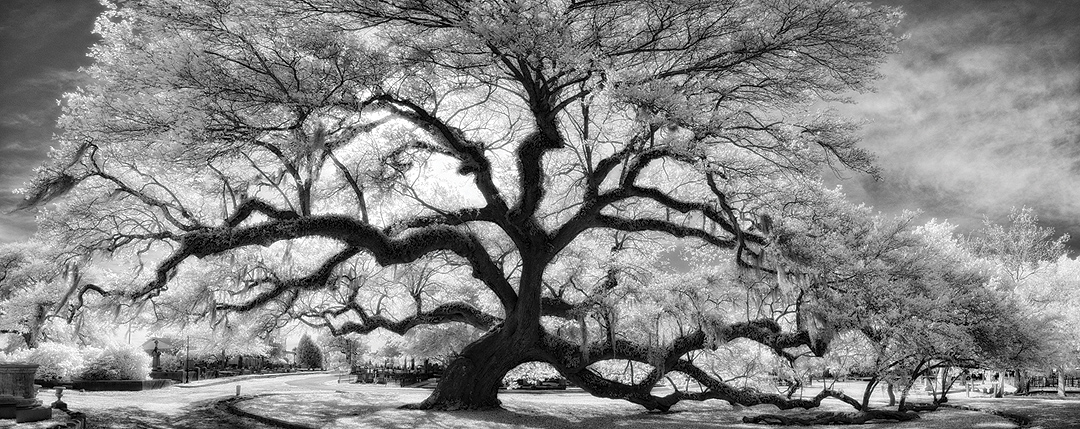Yes, I Pan: Pursuing the Bigger Picture
In the past few years I’ve seen panoramic images go from pretty much a cyclical fad to real popularity and prominence. I think that the new interest is due in part to the ease of using imaging hardware and software, but mostly it’s due to the desire to create something a little different in a world where everyone seems to be going to the same places at the same time to get the same photographs.
Anyone can take a picture and crop it to a panorama, but that often results in a reduced file size that could reduce print quality. Besides, the real creativity, excitement and visual drama is in selecting and shooting individual, overlapping images of a striking scene and stitching them together to form the panorama.
When I talk about panoramas at my workshops, here are some of questions I run into.
Can I hand-hold the camera to make the consecutive frames of a panoramic image? Yes, you can, but keep in mind that because the aperture should be stopped down to f/16 or f/22 for maximum sharpness, it’s a good idea to increase the ISO to achieve a fast enough shutter speed to avoid blur. A good rule is to keep the shutter speed at 1/over the maximum focal length of the lens. So for a 24-70mm zoom, a shutter speed of 1/70 second or faster is what you want; I’d suggest going for 1/125 second.
A tripod is really a better idea, isn’t it? It is. Keep the ball head loose and swivel the camera to create overlapping images. Using a tripod is definitely my preferred method.
Do I need software specific to stitching panoramic images? Nope. Photoshop’s Photomerge command (File>Automate>Photomerge) works quite well. Just be sure the images overlap enough for the software to be able to find and join them.
How much overlap? Opinions vary from one-third to one-half of each separate image as overlap. I generally overlap a little past one-third when I’m using a tripod, by one-half when I’m hand-holding the camera.
Is there a focal length that’s best for panoramas? I tend to go with my 24-70mm NIKKOR zoom. Trial and error has shown me that for most of my pans, 24mm is the widest angle that consistently works well for stitching. For pans of subjects at a great distance, the 70-200mm is my choice, but all of the images here were shot with the 24-70mm zoom.
Vertical or horizontal for the camera? I always advise shooting with the camera in a vertical position so that you have room to crop a bit of the image top and bottom to square things up. No matter how precise the panning technique, the image will seldom if ever be squared up north and south, and if you shoot a horizontal pan, cropping may result in an unacceptably narrow image.
Panoramic photography is no longer the domain of specialty cameras or equipment. It’s territory to be explored by anyone with a quality D-SLR, a tripod with a ball head, some basic software and the desire to create some new and exciting images.
Iceland Turf Houses: Five separate images, overlapped by one-half, were stitched to make this photo of turf houses in Iceland. With my lens at 24mm, I had to search for a position that would show all of the houses and a bit of the sky above the rugged hills.
Times Square, NYC: My photo op in Times Square resulted in this image—13 frames overlapped by one-half, with the tripod head locked down for the individual exposures.
Death Valley National Park: I took seven frames, overlapping by a little more than one-third, to make this panoramic image of Zabriskie Point in Death Valley National Park. The tripod head was locked down for each four-second exposure in the very low, early morning light. Note the photographers near the middle of the frame that I included for scale.
Charleston, S.C. Oak: An obvious panorama subject, this Live Oak in Charleston, South Carolina, took nine overlapping images. Practicing camera movements and becoming familiar with how wide a pan should be—its starting and ending points—are both good ideas.
Bretton Woods, N.H. Resort: The sheer size of the Mt. Washington Resort & Hotel in Bretton Woods, New Hampshire, called for a panoramic image, as a single wideangle shot couldn’t capture its dramatic look. This photo is the result of nine frames.
Visit Tony’s website, www.tonysweet.com, to view a collection of his images, learn about upcoming workshops and keep up with his Visual Artistry blog for “insights into the daily life of an itinerant freelance nature photographer.”










